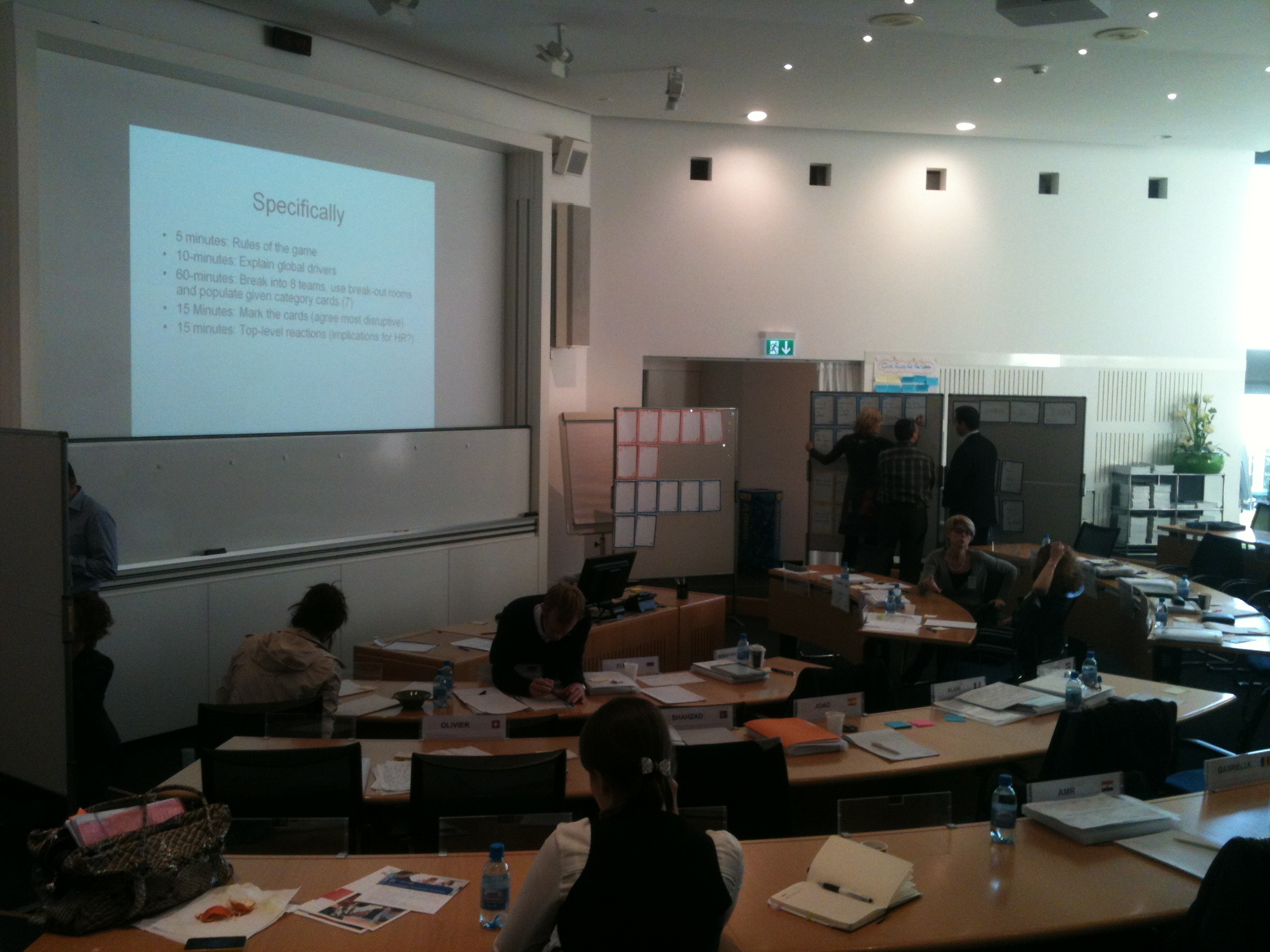
Judging by the recent jump in subscribers to the blog some of you seem to like free bits of my new book so here’s a tiny bit more – an overview of the 4 scenarios upon which the book is based. The visual, by the way, is a new map to go with the book (A timeline history of the world 1970-2040). More on the map very soon.
Scenario 1 – Imagine
This is a world where people are fully aware of the threats to the future such as climate concerns, but have an unshakeable belief in the power of science, technology and free markets to make life better from one generation to the next. It is a mind-blowing new world of technical challenges and radical inventiveness and re-engineering where everything is connected to everything else.
A fast sci-fi world of genetic manipulation, avatar assistants, virtual buildings, robotic soldiers, artificial intelligence, quantum computing, moon hotels, nanotechnology and geo-engineering, all ultimately driven by and reliant on free market capitalism. Clean technology is booming, especially nano-solar, fusion power is coming online and food and water shortages have both been addressed by the smart use of technology. Automation means that everyday life is accelerating while digitalisation, virtualisation, miniaturisation and ubiquitous connectivity mean that whole industries are being turned upside down and people are starting to question what reality really is. Fundamentally it is a world driven by human imagination and inventiveness.
Overall, the speed and depth of change is quite breathtaking. The Internet, for example, looks nothing like it did in 2012. This exponential change makes some individuals, especially older people – of which there are now so many – rather anxious, particularly when systemic risks and cascading failures emerge. But overall life is good, although in most instances it’s no longer life as we would know it today.
Scenario 2 – Please, Please Me
This in many ways is the familiar world that we had become so used to during the Long Boom (1991 – 2007) prior to the global events of 2008. It is a world of economic growth, free markets, individualism, consumerism, selfishness and self-indulgence where people work harder and longer and where greed and status remain key – and unapologetic – drivers of much human activity. It is a world of money where successful people, especially celebrities, are envied and copied by followers worldwide. It is a world of luxury, displacement and detachment too – for those that can afford it. The past is increasingly irrelevant in this world. Which celebrates newness and novelty and delights in planned obsolescence, over supply and over consumption.
One significant development is the dominance of the BRIC (Brazil, Russia, India & China) and N11 (Bangladesh, Egypt, Indonesia, Iran, Mexico, Nigeria, Pakistan, Philippines, Turkey, South Korea, and Vietnam) economies, especially the emergence of an endless stream of cutting edge technology companies from these markets.
In short this is a world that’s all about me, myself and I. A narrowly focused narcissistic world where it’s everyone for themselves and to hell with the consequences for everyone else. It is a world fundamentally driven by greed that, some might argue, has lost its way by confusing rapid movement with meaningful progress.
Scenario 3 – Helter Skelter
This is a world where a series of unexpected events create a general feeling of fear and fragility. The impact of climate change, the implosion of global financial systems and institutions, cyber crime, soaring food costs, high taxation and the ever-growing disparity between rich and poor mean that most people turn their backs on the notion of a single global economy. A few people with money remain relatively engaged in the global information economy, yet live in gated communities or areas with private security. Those with much less, especially those with no job, no money and no prospects are angry. They feel betrayed by the promise of globalisation and withdraw both physically and emotionally. The promise of free markets and democracy fade and people all over the world rediscover an angry appetite for parochialism, protectionism and regulation; concepts they themselves describe as a healthy self sufficiency.
It is a world running on empty where global politics drifts rightwards, nationalism and tribalism re-emerge and globalisation and localism are uneasy bedfellows. Ultimately it is a world driven by fear.
Scenario 4 – Dear Prudence
In this future people are alarmed about the health of the planet and especially the pervasive influence of materialism and individualism upon their lives and have therefore decided to take personal responsibility and do something about it. This is a world of sustainability and switching things off, of buying less stuff and seeking to reconnect locally with the simpler pleasures of life. It is a world where many things go backwards in a sense and one where ethics, values and reputation really count. Overall, most people are surprisingly happy – a “dark euphoria” Bruce Sterling once called it. This is partly because peoples’ lives have become more balanced and partly because there is a strong sense of common purpose. “Altogether now”, “less is more” and “You can help everyone, everyone can help you” are popular slogans. It is a pessimistic world, yet one that retains a degree of hope.
—
BTW, the book is out in Australia as an e-book and paper version but the p-version is almost impossible to get in other countries at the moment. It is coming out in China and the UK soon. If you really want to buy a paper version get in touch with myself, Oliver Freeman in Sydney (via Futures House.com) or Scribe Publications in Melbourne.
Link to the e-book on Amazon.
Link to Penguin Australia (hard copies).








